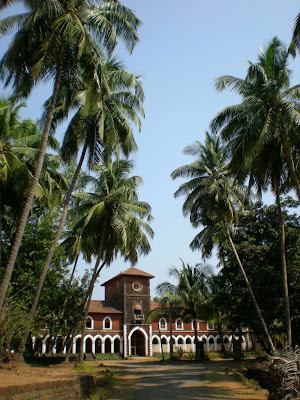
Human cargo formed an essential part of the many commodities traded and exchanged in sixteenth and seventieth century Goa. The following description by the French traveller Francois Pyrard, himself brought to Goa as a prisoner in chains in 1608, brings to life the ambiance of the market:
"Having spoken in the preceding chapter of the squares of the town, I shall proceed to say something of the markets. These markets, as far as regards provisions, are held every working day, and even on the lesser festivals, from six or seven in the morning until noon…There are to be found there all sorts of persons, nobles and humble, of all nations and religions...In this place are to be seen all kinds of merchandise, among others, numbers of slaves, whom they drive there as we do horses here; and you see the sellers come with great troops following. Then in order to sell them they praise them and put them up, telling all they can do, their craft, strength, and health, while the buyers examine them, question them, and scan them all over with curiosity, both males and females. The slaves themselves, hoping better treatment with a change of masters, show their disposition and praise themselves to take the fancy of the buyers. In buying, however, a certain day is agreed upon beforehand for repudiating or closing the bargain, so that they have time to learn the truth. You see there very pretty and elegant girls and women from all countries of India, most of whom can play upon instruments, embroider, sew very finely, and do all kinds of work, such as the making of sweetmeats, preserves, etc. All these slaves are very cheap, the dearest not being worth more than 20 or 30 perdos, of 32 sols each. Girls that are virgins are sold as such, and are examined by women, so that none dare use any trickery. They deem it no sin to have intercourse with their slaves whom they have bought, so long as they are not married: for a girl's master being the man who marries her, she may not be so used after a man has plighted his troth to her. Some of these girls are very pretty, fair, and comely, others are olive-coloured, brown, and of all colours. But those to whom they are usually most attracted are the Caifre girls of Mozambique and other places in Africa, who are as wondrously black, with curly hair; they call these Negra de Guinea. It is a remarkable fact which I have observed among all the Indian peoples, as well males as females, that their bodies and perspiration have no smell, whereas the negroes of Africa, from both sides of the Cape of Good Hope, stink in such wise that when they are heated it is impossible to approach them: their savour is as bad as that of green leeks….The largest revenues and wealth of those at Goa are from the labour of their slaves, who, every evening, or at the week's end, bring what they are required to produce; others, again, are retained at their houses to wait upon them. In this market are also to be seen a great number of other slaves that are not for sale, but themselves bring the work they have done, such as tapestry, embroideries, and needle- work; as also preserves, fruits, and other things. Others earn money by fetching and carrying anything required. The girls deck themselves out in fine style for this purpose, so as to be more attractive, and to sell their goods the better. In short, one sees there the wealth of the Indies in all kinds, and jewels the finest that can be seen. There also are the money changers, called Cherafes, of whom there are several at other points. Their shops are at the ends of streets and at the cross-roads, all covered with money, whereof they pay a tribute to the king."






















.JPG)






